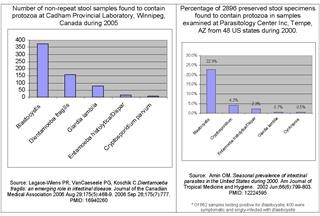The Infertility Website
Unexplained Infertility Defined
We have the best source for complete info and resources for Unexplained Infertility Defined on the Internet.
IVF is Generally Performed in the Following Manner: The woman undergoes gonadotropin injections, which stimulate the ovaries to produce many eggs. In 1978, the first baby was born as a result of IVF. Environmental vs Genetic Sex Determination: A Possible Factor in Dinosaur Extinction? (PDF, 307 KB) Fertility and Sterility, 2004. 8 Involvement in group counseling and exercise is more effective than weight loss advice alone. Diagnosis and Management of Hypogonadism, Infertility, and Impotence. (PDF, 13 MB) Chapter 22 of textbook,Male Reproductive Dysfunction, 1986. The emotional toll on both partners can affect their relationship.
Risk factors Risk factors that increase the risk include: Smoking significantly increases your risk of infertility Age: The ability to conceive starts to fall around the age of 32 years. Several studies have demonstrated that an increase in BMI is correlated with a decrease in sperm concentration, a decrease in motility and an increase DNA damage in sperm.
Here are Some More Details on Unexplained Infertility Defined

A lot more Resources For Kansas City Infertility Awareness Foundation
Your doctor may ask you many of the following questions: How long have you been trying to get pregnant? Couples will have to consider the ethical and emotional aspects of this procedure. Microsurgery Successful in Vasectomy Reversals. (PDF, 156 KB) The New York Times, 1975. PDF Articles by Decade: 1970s | 1980s | 1990s | 2000s | 2010s ARTICLES FROM THE 1970s Active Lupus Glomerulitis and Hematoxylin Bodies with Normal Urinalysis. (PDF, 5 MB) The Journal of Urology, 1971. The pituitary gland controls most other hormonal glands in the human body. A woman of reproductive age who has not conceived after 1 year of unprotected vaginal sexual intercourse, in the absence of any known cause of infertility.
More Details About Anovulatory Infertility Meaning
Quantitative Evaluation of Spermatogenesis by Testicular Histology in Men with Congenital Absence of the Vas Deferens Undergoing Epididymal Sperm Aspiration. (PDF, 3 MB) Human Reproduction, 1990. The most common identifiable causes of female fertility problems are outlined below: • Ovulatory dysfunction, (or anovulation) where an egg is not released from the ovary every month, is the single most common cause of female infertility. The content of counselling may differ depending on the concerned couple and the existing treatment options.
More Info Around Unexplained Infertility Defined
Debate: Are Spermatid Injections of any Clinical Value? (PDF, 6 MB) Human Reproduction, 1998. Endometriosis may be treated through laparoscopic surgery. It's used to remove polyps and fibroid tumors, divide scar tissue, and open up blocked tubes. Many more couples, however, experience involuntary childlessness for at least one year: estimates range from 12% to 28%.[4] Male infertility is responsible for 20–30% of infertility cases, while 20–35% are due to female infertility, and 25–40% are due to combined problems in both parts.[2][5] In 10–20% of cases, no cause is found.[5] The most common cause of female infertility is ovulatory problems, which generally manifest themselves by sparse or absent menstrual periods.[6] Male infertility is most commonly due to deficiencies in the semen, and semen quality is used as a surrogate measure of male fecundity.[7] Women who are fertile experience a natural period of fertility before and during ovulation, and they are naturally infertile for the rest of the menstrual cycle. Perfect Anatomical Reconstruction of Vas Deferens with a new Microscopic Surgical Technique. (PDF, 19 MB)Fertility and Sterility, 1977. A mouse study has suggested that ingredients in some household detergents may reduce fertility. Many more couples, however, experience involuntary childlessness for at least one year: estimates range from 12% to 28%.[4] Male infertility is responsible for 20–30% of infertility cases, while 20–35% are due to female infertility, and 25–40% are due to combined problems in both parts.[2][5] In 10–20% of cases, no cause is found.[5] The most common cause of female infertility is ovulatory problems, which generally manifest themselves by sparse or absent menstrual periods.[6] Male infertility is most commonly due to deficiencies in the semen, and semen quality is used as a surrogate measure of male fecundity.[7] Women who are fertile experience a natural period of fertility before and during ovulation, and they are naturally infertile for the rest of the menstrual cycle. Unfortunately, some men have to cope with the reality that nothing can be done about their infertility. If the sperm are of good quality and the mechanics of the woman's reproductive structures are good (patent fallopian tubes, no adhesions or scarring), a course of ovulation induction maybe used. In-vitro fertilization and donor insemination are major procedures involved. Infertility caused by DNA defects on the Y chromosome is passed on from father to son.
Previous Next
See also
Infertility Treatments at Home
Struggles of Infertility
Infertility Treatment Unitedhealthcare